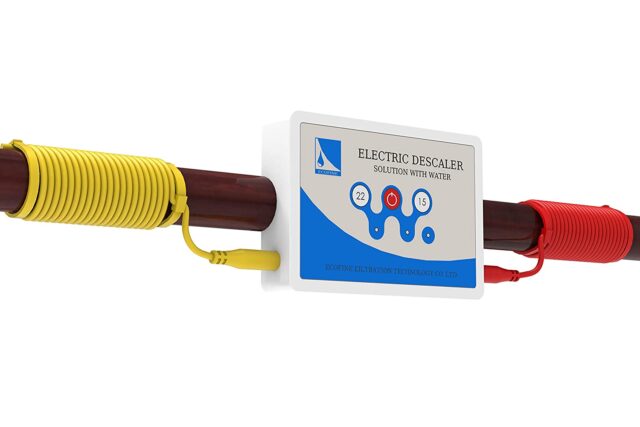There’s something about the sound of running water that just feels refreshing. Whether you’re brushing your teeth or taking a bath, it seems like a necessary part of our daily routine. But have you ever stopped to ask yourself how we can get that sonic blast of water?
The answer is surprisingly simple: through water filters. And in case you were wondering, electronic water softeners are among the most popular types of water filters on the market today. So what are their benefits? And are they really as good as they seem?
In this article, we will explore all of these questions and more, so that you can make an informed decision about whether or not to invest in an electronic water softener.
We’ll also provide some facts and figures about the industry as a whole so that you can have a better idea of what to expect from such a purchase.
What is an Electronic Water Softener?
Electronic water softeners use an electrical current to loosen minerals from water. The softened water can be used for irrigation, washing machines and other appliances.
There are two main types of electronic water softeners: internal and external. Internal water softeners are built into the home’s plumbing system. External water softeners sit on the property line and use magnets to pick up minerals from the water flowing through their pipes.
Both types of electronic water softeners have advantages and disadvantages. Internal water softeners are more compact, but they can be more expensive to install than external models.
External water softeners tend to be less expensive, but they may require periodic maintenance to keep their magnetism working correctly.
Overall, electronic water softeners seem to work well in most cases, but there are a few considerations that should be made before buying one.
How do they work?
Water softeners use electronic components to remove hardness and other minerals from water. The softened water can then be used for drinking, bathing, washing clothes and dishes, or landscaping.
An electric current is run through the water while a resin collects on the filter. Over time, the resin will build up until it blocks the flow of electricity. This means that harder minerals have been removed from the water and it is now considered “soft.”
Facts About Electronic Water Softeners?
They are typically smaller and more efficient than traditional water softeners, but they may also cost more.
Some people argue that electronic water softeners are not effective at removing minerals and can leave a metallic taste in the water. There is no scientific evidence to support these claims, but some people choose not to use electronic water softeners because of them.
Are they Eco Friendly?
There has been a lot of speculation about the eco-friendliness of electronic water softeners. Some people feel that these appliances are not as environmentally friendly as traditional water softeners because they use more energy. Others claim that electronic water softeners are actually more environmentally friendly since they don’t use any chemicals.
There is no one answer to this question since it depends on how you use an electronic water softener and what kind of environmental impact it has.
If you only use the appliance for laundering purposes, then it probably won’t have a significant impact on the environment. However, if you also use it to purify water for drinking or irrigation, then it could have a larger impact.
Overall, electronic water softeners appear to be slightly less harmful to the environment than traditional water softeners. They may use more energy in the short term, but they tend to have lower environmental impacts over time.
Maintenance Tips

There are a few things that you can do to help keep your electronic water softener running smoothly.
Regular maintenance will help to ensure that the unit is operating at its peak performance, and can help prevent potential issues from arising. The following are some of the most common maintenance tasks for an electronic water softener:
- Check all connections and wires for proper connection and insulation. Make sure there is no slack in the wiring or connections, and check for any signs of wear or damage.
- Check filters and replace as needed. Replace both the clogging prevention filter and the sedimentation filter every 6 months, especially if your water has a high hardness level. If your water contains a lot of minerals, replace the carbon block filter every 3 months.
- Clean the internal parts of the unit using mild detergent and water. Be sure to avoid using harsh chemicals or abrasives as they may damage the unit’s internals over time.
- Empty and refill the salt chamber as needed (1-2 lbs./day). This will also help to redistribute any accumulated buildup in the chamber over time.
Pros and Cons
Pros
There are many advantages to using an electronic water softener over a traditional system. Here are three of the most important:
- Reduced Maintenance Costs: An electronic water softener requires far less maintenance than a traditional system. There is no need to change filters, add salt, or operate the machine frequently.
- Faster Operation: An electronic water softener operates more quickly than a traditional system, meaning you will save time and money in your water treatment process.
- Reduced Water Softening costs: An electronic water softener typically uses less salt than a traditional system, which can lead to significant savings on your water softening bill.
Cons
There are a few disadvantages of using an electronic water softener. One disadvantage is that they can be more expensive than traditional water softeners. Another disadvantage is that they may not be as effective at removing hard water minerals from the water.
Conclusion
In summary, electronic water softeners work by using an electrical current to soften water. They have many advantages, including reduced maintenance costs and faster operation.
However, they may not be as effective at removing hard water minerals from the water, and they may cost more than traditional systems.










